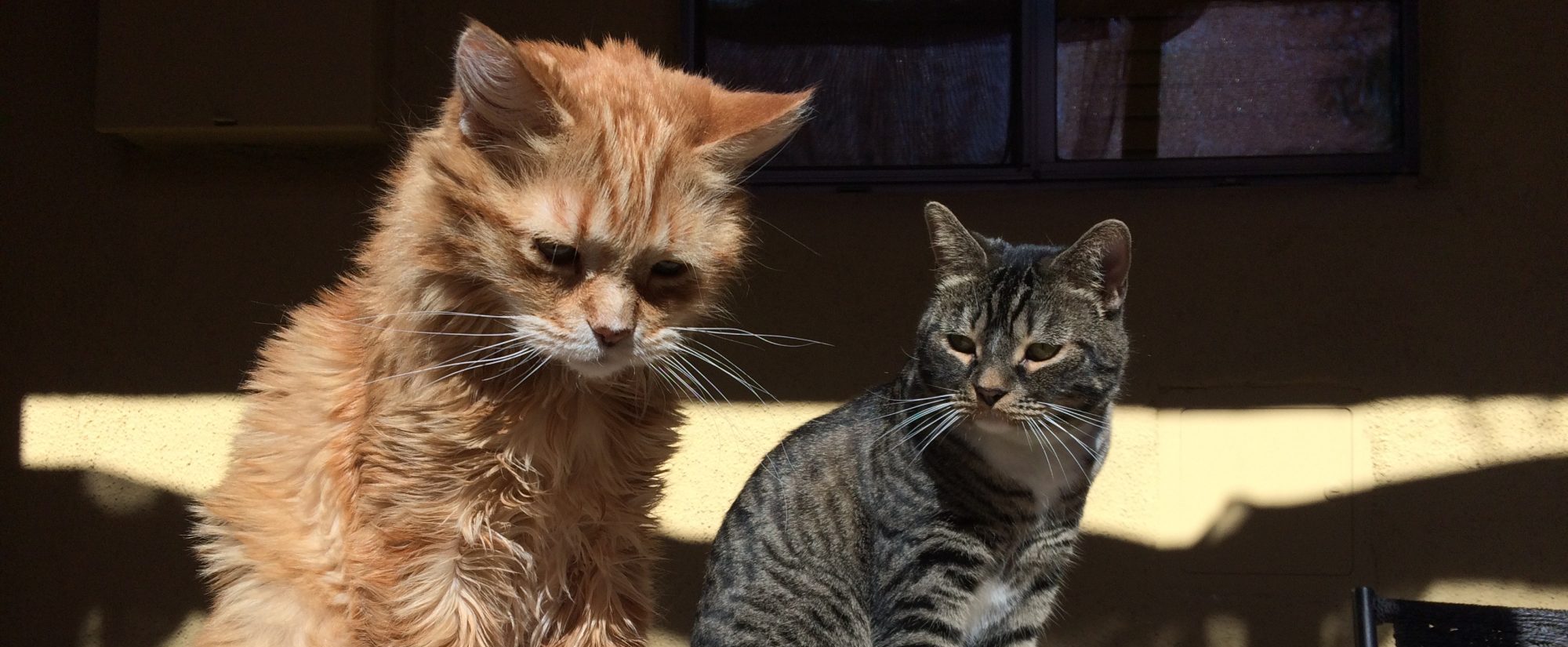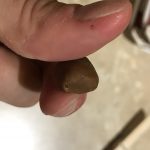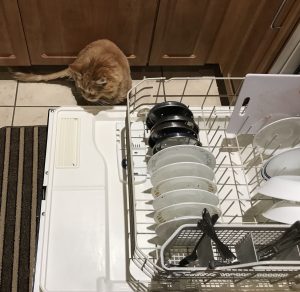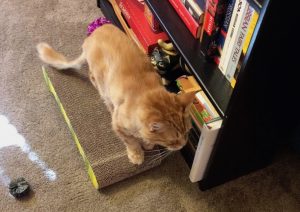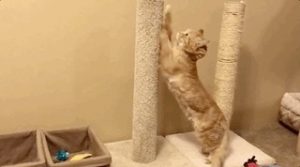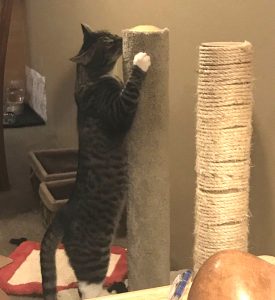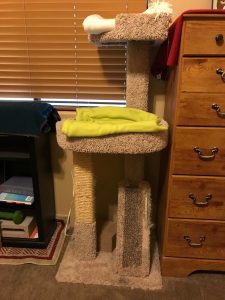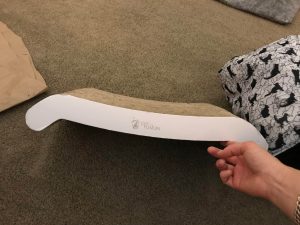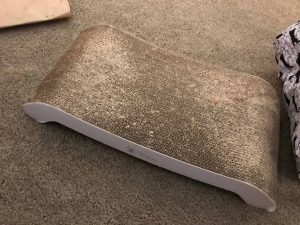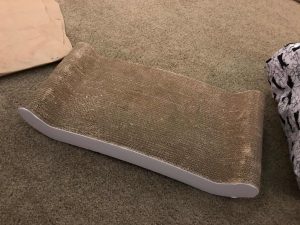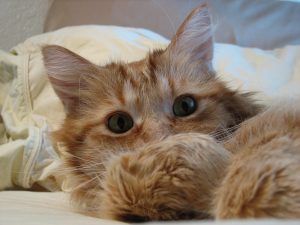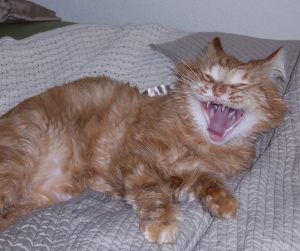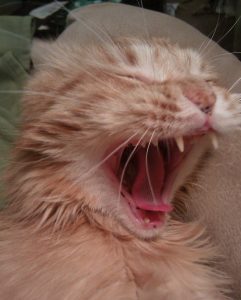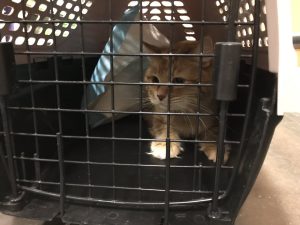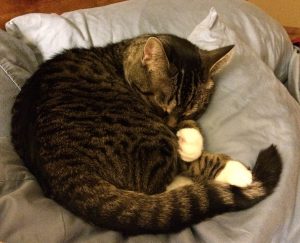A lot of people will say that you can’t train cats or get them to follow rules. I think that’s mostly a misconception! Sure, there are some cats that don’t give a damn about what their humans think of them and will do exactly as they please (or even do exactly what you don’t want to them to do out of spite). But I think most cats are very trainable if you approach it the right way. This post isn’t about teaching tricks (although I have successfully taught tricks to cats before!) but about training cats to respect boundaries.
I’ve found that the key to setting boundaries is consistency and making it really really easy for the cat to do the right thing. The latter is why, for example, there are 7 scratching posts in my two bedroom apartment. Each room (the two bedrooms and the main living area) has at least one sisal post for Tycho and one carpeted post for Gus. They never have to look far for a post when the urge to stretch and scratch hits them, so neither cat has ever scratched my furniture! I didn’t have to use deterrents like sticky tape or squirt bottles to get them to realize that scratching posts are their only option for clawing. There’s nothing wrong with using deterrents (some cats do need a little extra help to get the message!), but if you find yourself always having to scold the cat for scratching the wrong thing, maybe you haven’t make it easy enough to scratch the right thing!
I recently found myself in a situation with Gus where I needed to make it easier for him to do the right thing and respect the rules. One of the very few rules for my cats is that they are not supposed to be up on the dining table or the kitchen counters. Admittedly, I have not been consistent enough about enforcing the dining table rules:
This is mostly because I let the cats sit with me while I eat, and that sometimes leads to front paws on the table (and then that leads to Tycho thinking, hey, why not all 4!). This behavior is my own fault, so I just tell the cats to get down if I see them up there or pick them up and put them back on the chairs. No squirt bottles or loud scolding because the behavior is my own fault.
Unlike the sloppy table rule enforcement, I am very strict and consistent about the kitchen counters. I do not want them anywhere near my food preparation, and I don’t want any burns or cuts if they happen to get up there while I’m cooking! Gus got the message very early on that he wasn’t allowed up there (he’s very responsive to me saying “no” or picking up the squirt bottle, I don’t think I ever actually squirted him). And he never gets up there when I’m in the room. But there was a problem, because I frequently would walk back into the room and see him on the counter! The problem was that there was a huge incentive for him to get up on the counter next to the sink: the window above the sink looks out into our backyard catio (which the cats only get to use under direct supervision). Gus loves that catio:
And he sees the catio as his territory to patrol. There are three windows that look out into the backyard: the one above the kitchen sink, one on the back door in the kitchen, and one in my bedroom. The cats have a lovely cat tree and bookshelf that lets them look out into the yard from my bedroom window, but you can’t see the catio from there. You can only see the catio from the kitchen. Gus really really wanted to be able to look out into his catio to make sure it was free of intruders, but there was no way for him to do that without breaking the kitchen counter rules.
That was an unfair position to put Gus in. He knows he’s not supposed to be up on the counter next to the kitchen sink, but he really needs to make sure his territory is clear! So this week I came up with a solution to make it easier for him to follow the rules. I built a viewing shelf on the back door for him to sit on (and put a stool next to it so he could easily get up and down):

Now he can check on his catio whenever he wants without having to break any rules! After I built it, I plopped him up there and gave him a lot of positive attention to make it clear it was his shelf. He was very happy:
He doesn’t like breaking rules, so I guarantee that’s the end of him being on the counter! So now we’re both happy!
Gus had a legitimate need (cats are territorial!) that was making it impossible for him to obey my rules, so I had to give him an approved way to keep an eye on his territory. Sometimes you have to get creative to make the rules easier to follow! So next time you get frustrated that you can’t get your cat to follow the rules, stop and think about what you can do to make good behavior easier!
